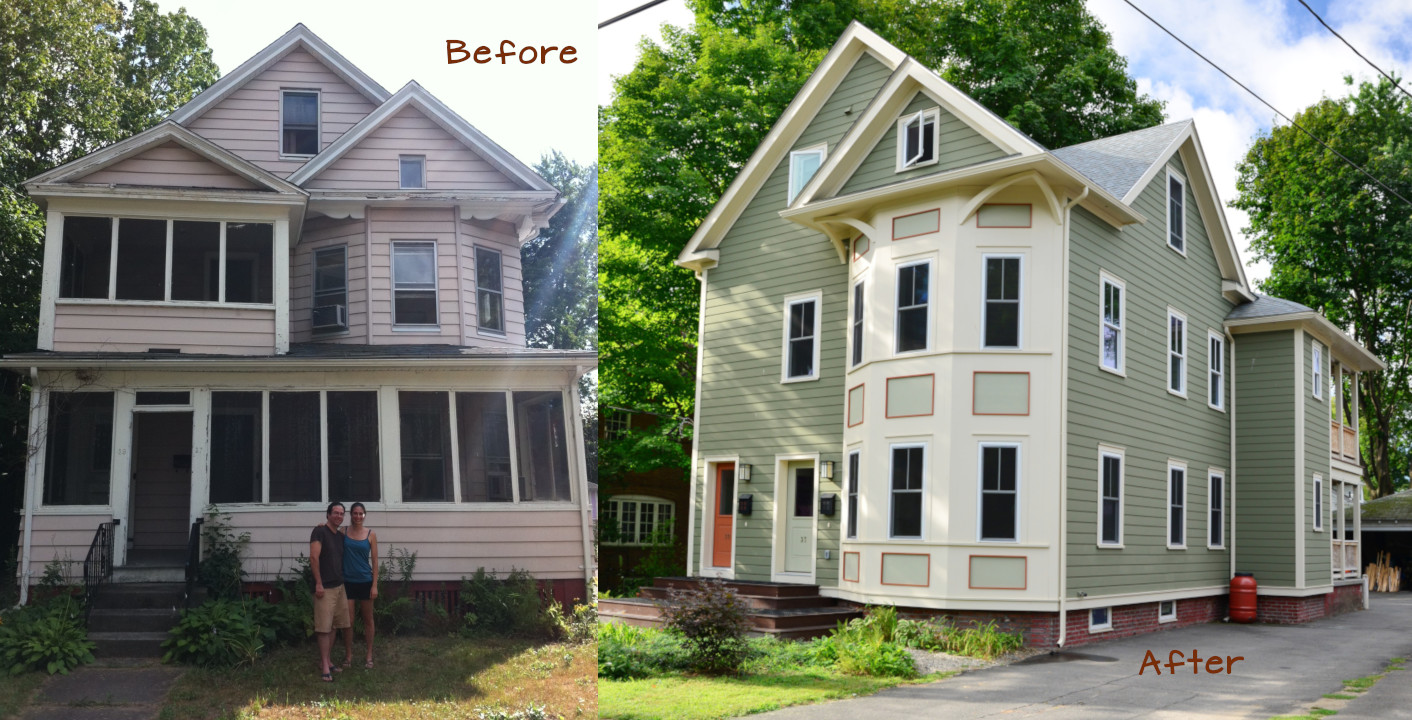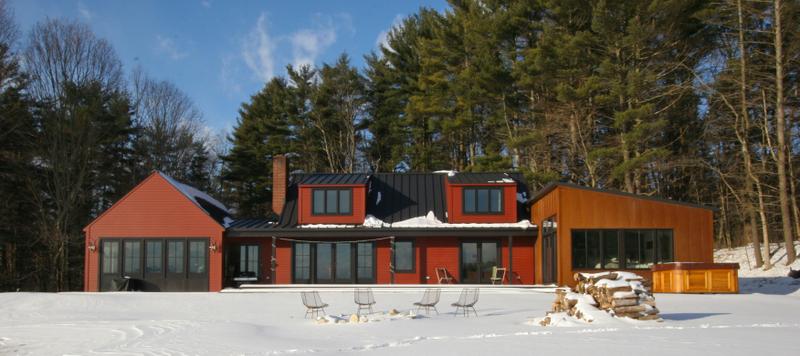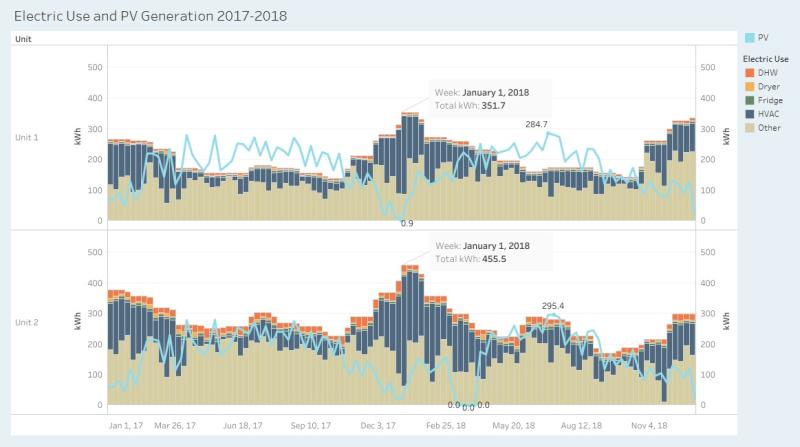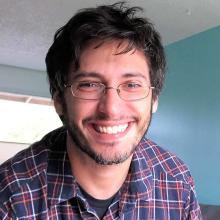COMPANY SPOTLIGHT: Maple Street Architects
BuildingEnergy Access is a NESEA initiative to support the work of WMBEs (women and minority-owned business enterprises) by connecting them with the resources of the NESEA community. Each month, we'll introduce a participating company to the wider NESEA community through a spotlight interview.
We recently sat down with Rachel Stevens of Maple Street Architects, a small, family-owned Northampton, MA-based architecture firm focusing on serving our community with the efficiency and beauty of good design. They offer full architectural services, lightweight design consultation, and everything in between, tailored to the needs of your project.
 Ian Reed: To begin, will you share a brief description of your company?
Ian Reed: To begin, will you share a brief description of your company?
Rachel Stevens: My husband and I have been running Maple Street Architects since 2009, and we primarily focus on residential construction. Our favorite style is to reuse buildings as the largest form of recycling. We like to work with families to redevelop their spaces to meet their needs.
Over the years, we've done some multifamily houses and apartment buildings, but even then, our impact is really quite small compared to the scale of the built environment that we have all around us. To that end, I've recently been focusing on data analytics work and doing some consulting on a broader scale to reach more homes and have more of an impact on a greater climate scale — to try to tackle the climate work that we need to be doing as an industry of the built environment, regarding energy use.
For example, one of the data projects looks at how residents use buildings. The house that we live in is exceeding the design goals that we set for it–the way that we're using the house is using less energy than we planned for in the design, whereas some other homes that we designed and measured used more energy than was planned for. And so one of the projects I analyzed was looking at some of the things that have impacted the energy use of the building. How can we train homeowners to use their buildings in a way that is the most efficient and better for the environment and also for their energy budget?
IR: How many years have you been in business and what started that initial step toward opening your own business?
RS: You know, I worked for some great architects over the years, and all of them were small practitioners (except for one larger firm). I’ve always loved that smaller firm environment. The mentorship that I got from people like Margo Jones in Greenfield, Maryann Thompson in Cambridge, and Peter Frothingham in Northampton taught me so much of the business that it just felt natural to be able to take on the role of a firm when my husband and I were ready to do so. The size of our firm gives us the ability to choose the projects that we want to work on and tailor that work to reflect what we believe in.
IR: Is there a project you've worked on that you would like to spotlight for our readers? 
RS: One of the current projects that I've been working on with the City of Northampton is figuring out how to analyze the whole residential building stock altogether, and to figure out which homes would have the most impact if they went through the MassSave program, compared to other homes. So, this isn't talking about giving homes different grants, but rather it's talking about targeting homes to encourage them to participate in a grant that's already in place. We need to figure out which people we need to reach, how to reach those people, and how to encourage them to make the changes that will impact all of us on the planet. That project is in between phases right now, but it's one we’re very excited about.
 IR: Addressing home energy use at a broader scale, reaching out and trying to solve problems, instead of exclusively relying on people addressing energy efficiency themselves, seems like a great strategy. Presumably, that work could make a big impact locally.
IR: Addressing home energy use at a broader scale, reaching out and trying to solve problems, instead of exclusively relying on people addressing energy efficiency themselves, seems like a great strategy. Presumably, that work could make a big impact locally.
RS: Yes, it's great because there's so much funding out there right now for energy efficiency, but it's still complicated work for homeowners to do, and sometimes the work needs to be paid for upfront and then reimbursed. That creates a lot of insecurity on the homeowner's part: not knowing for sure that things are going to apply to them or not, just not having the time to schedule things, and so on.
There are a lot of societal hurdles and even though MassSave has tons of money out there for this type of work that would be beneficial to a lot of people, only 1% of Massachusetts residents participate in the program and we need to increase those numbers. We need to have a lot more people doing this kind of work, focusing on retrofitting our existing building stock. I think the codes have done a wonderful job of really improving standards, raising the bar a lot for new construction homes, and that's wonderful. That’s great for the next century, but we also have all the homes from the previous century that we need to bring up to speed. That's part of the work that I'm doing right now; trying to figure out how we select which of those are the most important to target as soon as possible.
IR: Is that the direction you see taking the business or is it sort of reacting to the issue and seeing where you can make the biggest impact in the short term?
 RS: One of the things that I'm learning as we adapt to this larger-scale policy work is that the timeline of the projects is very different, and it's a new timeline for me as an architect. I'm used to projects taking years to cometogether, so that’s familiar of course, but it's still a very different pace of work and there are different kinds of deadlines involved. With policy work, you know, there might be a push towards a presentation for a certain community gathering, but then there's often a big delay while things move through various decision-making offices. Or perhaps the funding gets allocated, but then it takes months to get the right people in the room at the same time. That’s taken some adjustment.
RS: One of the things that I'm learning as we adapt to this larger-scale policy work is that the timeline of the projects is very different, and it's a new timeline for me as an architect. I'm used to projects taking years to cometogether, so that’s familiar of course, but it's still a very different pace of work and there are different kinds of deadlines involved. With policy work, you know, there might be a push towards a presentation for a certain community gathering, but then there's often a big delay while things move through various decision-making offices. Or perhaps the funding gets allocated, but then it takes months to get the right people in the room at the same time. That’s taken some adjustment.
That said, I think this type of work fits in well with our existing architectural work because it can slot into different pieces of the day as needed, and I’m able to push things forward incrementally. We schedule meetings, we move forward with teams, and we make sure that we're touching base with different people at different times. It’s a balance; right now, I don’t see myself focusing solely on data analytics work because there are just so many delays in the process.
IR: Let’s pivot to BuildingEnergy Access and your involvement in that program. How has that experience been for you so far?
RS: It has been such a wonderful experience and the timing was unbelievable because Access started up right as I was finishing a certificate in data analytics.
It's been so inspiring to work with all these different women in the business development groups and it's an interesting holistic program that the organizers put together, I've been really impressed. The program has personal, one-on-one work, there's some small group work, and there's some integration with the larger community of Bottom Lines that's been around for 10 years.
It's been so exciting; we’ve made great connections, and there’s been a ton of learning on so many different levels. We now have access to a community where learning is just ongoing. Every day there's somebody interested in a new topic, posting something for us to think about and all kinds of different team members weigh in. It's just a really great community to be involved with. We're very lucky.
IR: That brings us to our final question: What part of NESEA’s programming or community are you most excited to be involved in?
RS: Bottom Lines, to me, is the pinnacle of everything that I look for in a work community. It’s a wonderful program to be involved with. Beyond that, within the Bottom Lines community, there's an anti-racist action group that I've joined recently. We've been talking about how to bring those ideas out into our broader local communities. I'm excited about that kind of work as well. And the conference in Boston every year is always really inspiring. Some great people come to the conference, and it's always a treat to get to see those presentations.
IR: Perfect! Thanks so much for taking the time to speak with us today.
RS: Nice to meet you, Ian. Thanks.
Our Mission
NESEA advances sustainability practices in the built environment by cultivating a cross-disciplinary community where practitioners are encouraged to share, collaborate and learn.




